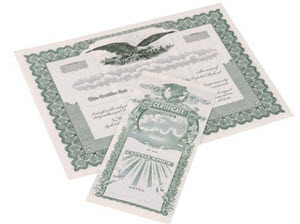Futures contracts are a type of derivatives. In finance, a futures contract is an agreement between two parties to carry out a specific transaction on a pre-specified date. This date is called the delivery date. One of the parties is obliged to purchase a specific asset from the other party for a predetermined price, and the other party is obliged to sell that asset to the party for the predetermined price. The predetermined price is known as the futures price.
 The underlying asset that is to be sold can be stocks, currency, bonds, commodity, equity or something else. There are also modern futures contracts that doesn’t even have a physical underlying asset. Instead, the futures contract can be tied to a certain index that will determine which one (or none) of the parties that makes a profit from the futures contract.
The underlying asset that is to be sold can be stocks, currency, bonds, commodity, equity or something else. There are also modern futures contracts that doesn’t even have a physical underlying asset. Instead, the futures contract can be tied to a certain index that will determine which one (or none) of the parties that makes a profit from the futures contract.
Over time, a market for options on futures contracts has developed. Such options are called futures options. A put is the option to sell a futures contract, while a call is the option to buy a futures contract.
Why use futures contracts?
Futures contracts developed as a way to mitigate risk. You can use a futures contract to fix the price of an asset today, even though the transaction will not be carried out until several months into the future.
Today, futures contracts tend to be highly standardized. Their standardization makes it possible to trade them on exchanges. Futures contracts are no longer only used to mitigate risk, but also for speculative purposes.
Margin accounts
When the two parties enter into a futures contracts, the exchange will require them to deposit collateral into a margin account. The collateral is typically cash or a performance bond. The collateral requirement has to do with the futures contracts history of originally being an instrument used for hedging (risk mitigation). The assets held in the margin account of a party can given to the other party if the first party fails to honor its contractual obligations.
The parties must maintain their margins for the duration of the futures contract. Once a day, the exchange will check the discrepancy between the futures price and current market price of the underlying asset, and (if necessary) move money from one margin account to the other. If a situation arises where there isn’t enough assets in a margin account to cover the discrepancy, the exchange will contact the owner of the margin account and demand them to add more collateral.
Settlement
 A futures contract can be settled by delivery of the underlying asset or by making a cash settlement. As mentioned above, some types of futures contracts have no physical underlying assets. Such futures contracts much of course be settled in cash.
A futures contract can be settled by delivery of the underlying asset or by making a cash settlement. As mentioned above, some types of futures contracts have no physical underlying assets. Such futures contracts much of course be settled in cash.
When a futures contract traded on an exchange is settled physically, the physical asset (such as a bond or a commodity) must be delivered to the exchange – not to any individual party. The exchange is then responsible for making sure that the physical asset reaches its recipient.
So, how can you know when it is time to settle a futures contract? Since futures contracts are standardized, there is also a standard system employed to show when a futures contract must be settled. On the contract, you will see a code comprised of five characters (letters and numbers).
- The two first letters will tell you what type of futures contracts this is.
- The third letter will tell you in which month the futures contract must be settled.
-
F = January J = April N = July V = October G = February K = May Q = August X = November H = March M = June U = September Z = December
- The code will end with two digits, and these digits will tell you the year when the futures contract must be settled.
Example: The code is CLX17.
- This is a futures contract for crude oil, since CL = crude oil.
- This futures contract must be settled in November, since X = November.
- This futures contracts must be settled in the year 2017, since 17 = 2017.
As you can see, this is a crude oil futures contract that must be settled in November 2017.
